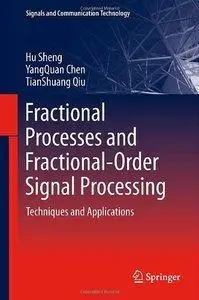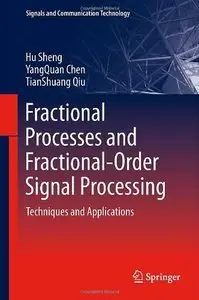Hu Sheng, YangQuan Chen, TianShuang Qiu, "Fractional Processes and Fractional-Order Signal Processing: Techniques and Applications"
English | 2012 | 321 Pages | ISBN: 1447122321 | PDF | 16 MB
English | 2012 | 321 Pages | ISBN: 1447122321 | PDF | 16 MB
Fractional processes are widely found in science, technology and engineering systems. In Fractional Processes and Fractional-order Signal Processing, some complex random signals, characterized by the presence of a heavy-tailed distribution or non-negligible dependence between distant observations (local and long memory), are introduced and examined from the ‘fractional’ perspective using simulation, fractional-order modeling and filtering and realization of fractional-order systems. These fractional-order signal processing (FOSP) techniques are based on fractional calculus, the fractional Fourier transform and fractional lower-order moments. Fractional Processes and Fractional-order Signal Processing: presents fractional processes of fixed, variable and distributed order studied as the output of fractional-order differential systems; introduces FOSP techniques and the fractional signals and fractional systems point of view; details real-world-application examples of FOSP techniques to demonstrate their utility; and provides important background material on Mittag–Leffler functions, the use of numerical inverse Laplace transform algorithms and supporting MATLAB® codes together with a helpful survey of relevant webpages. Readers will be able to use the techniques presented to re-examine their signals and signal-processing methods. This text offers an extended toolbox for complex signals from diverse fields in science and engineering. It will give academic researchers and practitioners a novel insight into the complex random signals characterized by fractional properties, and some powerful tools to analyze those signals.



